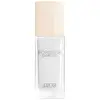What's inside
What's inside
 Key Ingredients
Key Ingredients

 Benefits
Benefits

 Concerns
Concerns

 Ingredients Side-by-side
Ingredients Side-by-side

Water
Skin ConditioningAlcohol
AntimicrobialGlycerin
HumectantSqualane
EmollientBetaine
HumectantButylene Glycol
HumectantLimnanthes Alba Seed Oil
Skin ConditioningPolyglycerin-3
HumectantLauroyl Lysine
Skin ConditioningHibiscus Sabdariffa Flower Extract
Skin ConditioningIris Florentina Root Extract
MaskingSynthetic Fluorphlogopite
Hydroxyethyl Acrylate/Sodium Acryloyldimethyl Taurate Copolymer
Emulsion StabilisingPolyglycerin-6
HumectantCaprylyl Glycol
EmollientHydrogenated Lecithin
EmulsifyingPentylene Glycol
Skin ConditioningChlorphenesin
AntimicrobialSodium Citrate
BufferingSodium Hyaluronate
HumectantParfum
MaskingAlcaligenes Polysaccharides
EmollientPolysorbate 60
EmulsifyingSorbitan Isostearate
EmulsifyingSodium Surfactin
CleansingTin Oxide
AbrasiveHydrolyzed Viola Tricolor Extract
Skin ProtectingCitric Acid
Buffering1,2-Hexanediol
Skin ConditioningSodium Benzoate
MaskingPotassium Sorbate
PreservativeTocopherol
AntioxidantCI 77891
Cosmetic ColorantWater, Alcohol, Glycerin, Squalane, Betaine, Butylene Glycol, Limnanthes Alba Seed Oil, Polyglycerin-3, Lauroyl Lysine, Hibiscus Sabdariffa Flower Extract, Iris Florentina Root Extract, Synthetic Fluorphlogopite, Hydroxyethyl Acrylate/Sodium Acryloyldimethyl Taurate Copolymer, Polyglycerin-6, Caprylyl Glycol, Hydrogenated Lecithin, Pentylene Glycol, Chlorphenesin, Sodium Citrate, Sodium Hyaluronate, Parfum, Alcaligenes Polysaccharides, Polysorbate 60, Sorbitan Isostearate, Sodium Surfactin, Tin Oxide, Hydrolyzed Viola Tricolor Extract, Citric Acid, 1,2-Hexanediol, Sodium Benzoate, Potassium Sorbate, Tocopherol, CI 77891